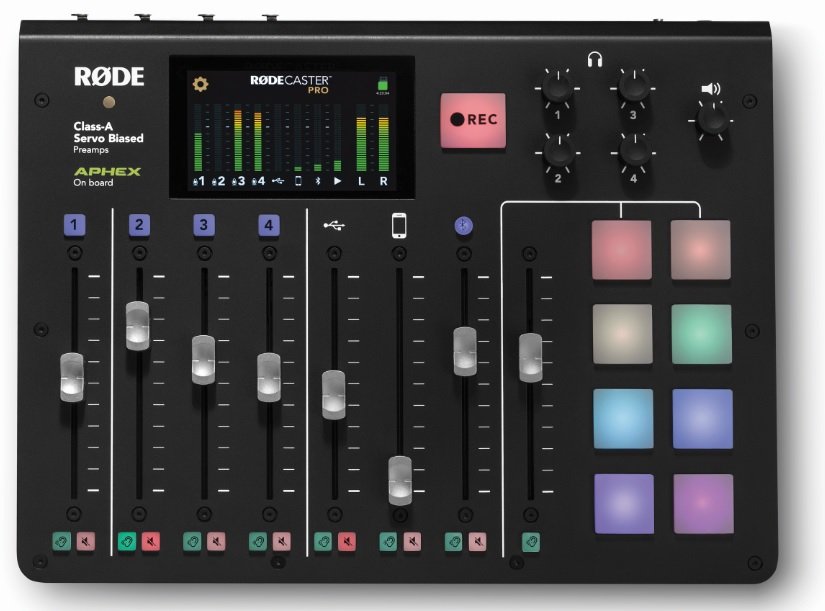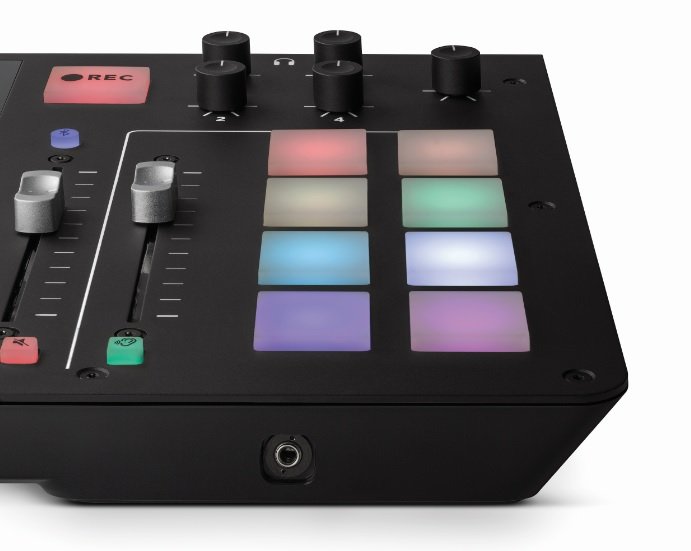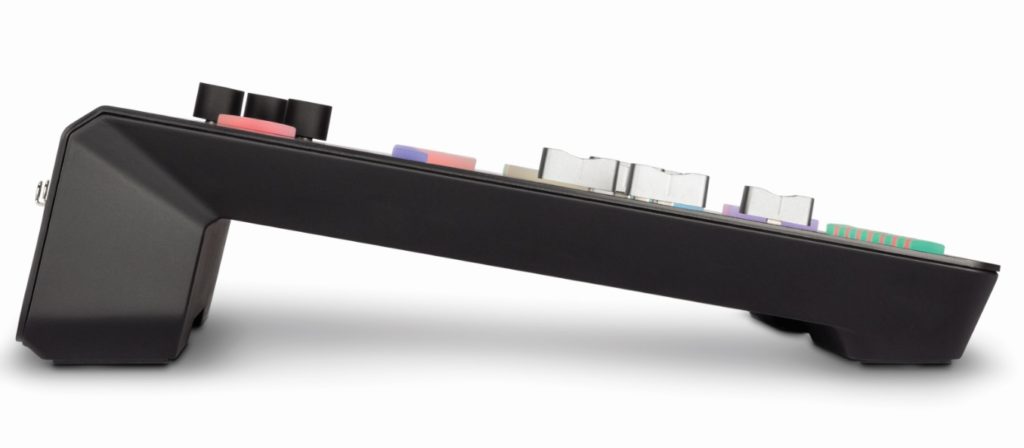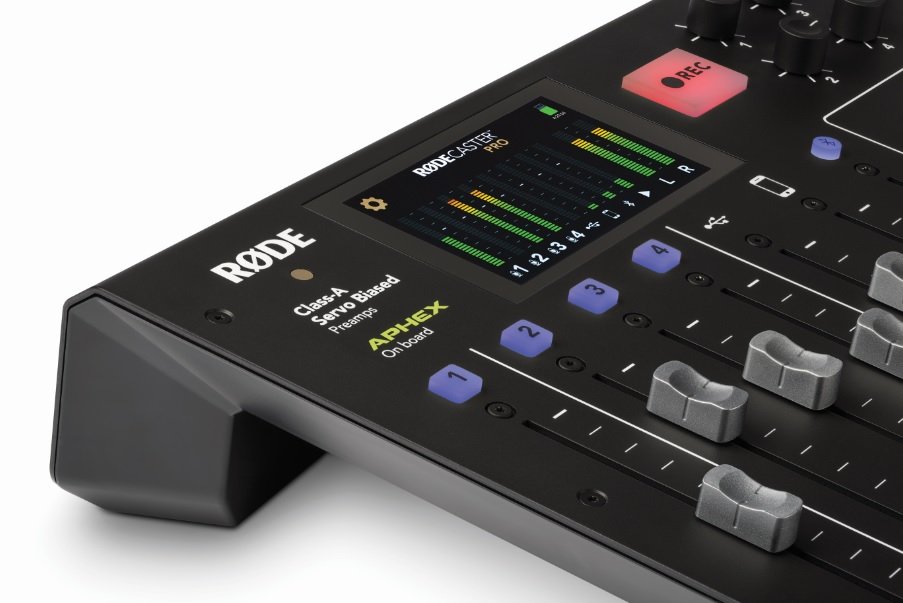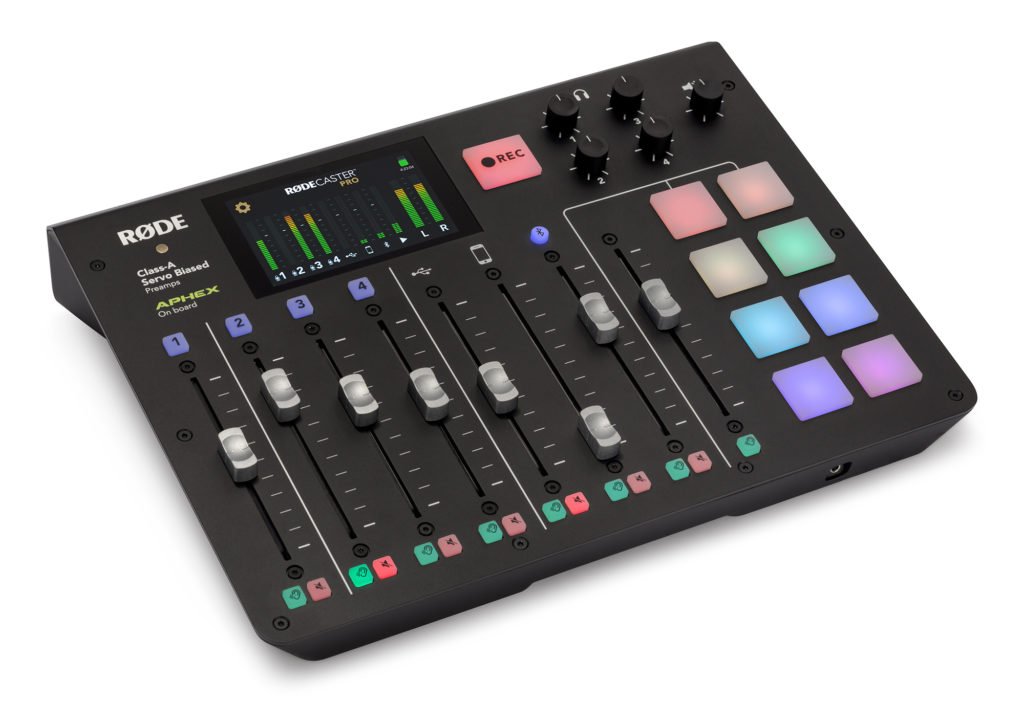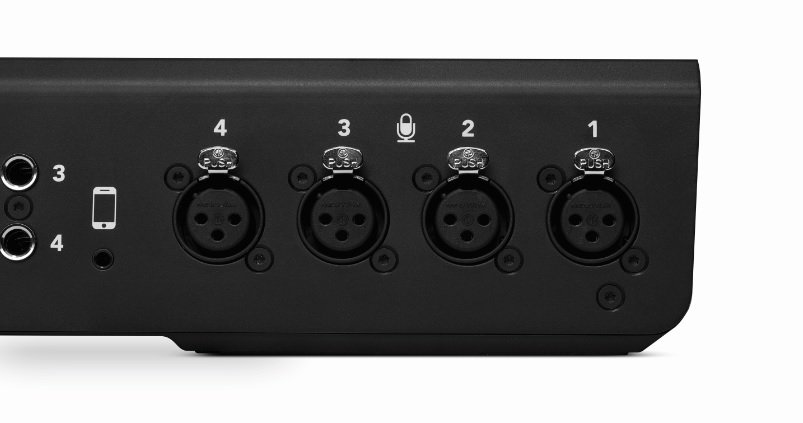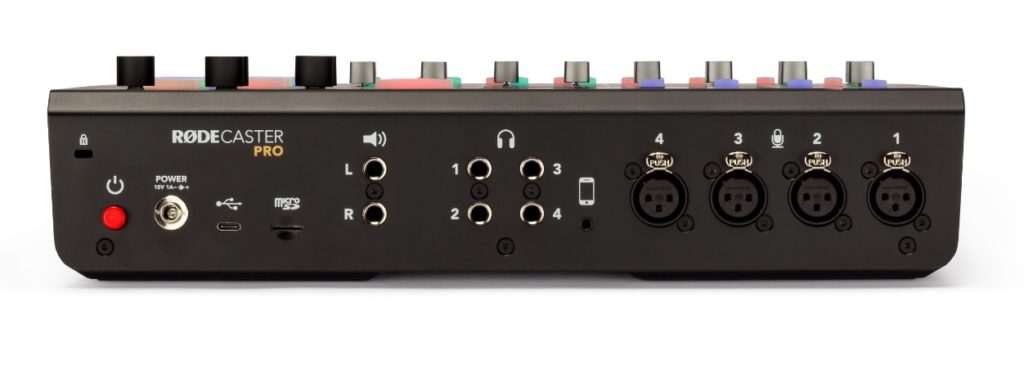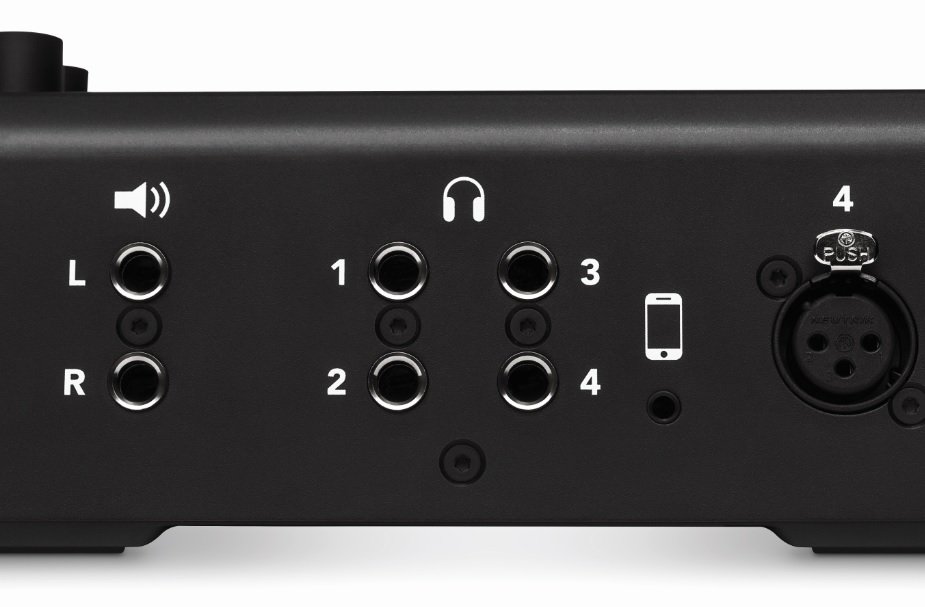News
10 Jun 2020
RØDECaster Pro
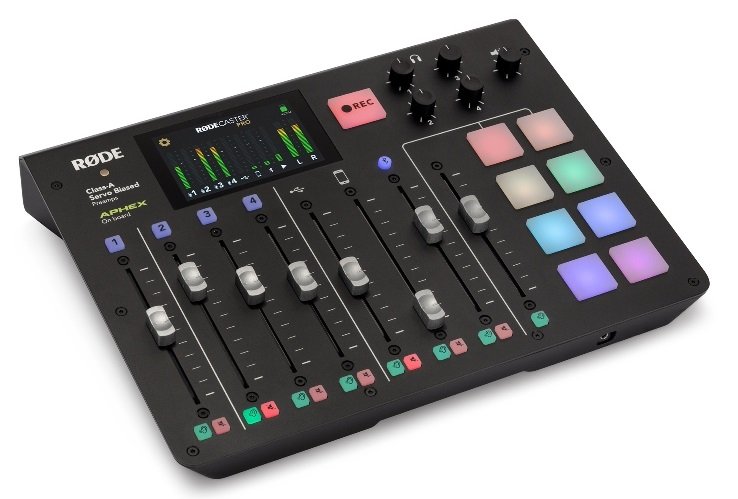
Subscribe to CX E-News
As I write this review, the COVID-19 virus has changed the way society functions around the globe. Social distancing and self-isolation are the new normal. The connections we once made with people in a face-to-face scenario are now virtual.
This means the need for good, accessible communication technology is more important than ever, and this has seen products such as the RØDECaster Pro gain even greater relevance.
Podcasts have been around for ages now, and indeed RØDE has been a long-time supporter of this market with functional and affordable solutions. Products such as the original Podcaster USB microphone have endured because they work well. But sometimes you need more than one mic for more than one presenter…
Enter the RØDECaster Pro, touted as the world’s first fully integrated podcast production studio. It’s a mixer. It’s a processor. It’s a digital recorder. It’s a USB interface. It’s a headphone amp. It’s portable. It does multitrack. It’s ridiculously straightforward to use, and yet simultaneously powerful enough to satisfy the needs of professional users.
I mention accessible technology at the start of this review, because virtually nobody making podcasts is making podcasts about the technical aspects of making podcasts. People make podcasts about cooking, or cars, or fishing, or clothes, or gaming. One of my mates does a regular podcast about craft beer.
None of those topics has an inherent requirement of knowing how to do good audio. None of these people really care how the technology works, so long as it works for them.
From the moment you open the box, you’re met with nice sturdy cardboard sheets which detail what each part of the RØDECaster Pro is and does. Getting up and running is literally as simple as plugging in power, mics, headphones and a microSD card, then switching the unit on, tapping on each channel and choosing a mic type, then pushing up the faders and hitting the big record button.
That’s it – all the instructions you need to get started can fit into five lines of text (at least on my screen).
Up to eight sources can be mixed and recorded – four mic inputs, a TRRS line, a Bluetooth connection (which is really easy and fast to pair), a USB feed from a connected computer, and a bank of sound pad buttons into which various stings, effects and music can be loaded.
512Mb of internal memory is included to store sounds, so you can even load a decent sized segment onto a button! Sounds can be loaded in via computer, or you can record the output of the RØDECaster Pro directly into a pad.
Up to eight banks of sounds can be setup (64 different sounds in total), with different playback options and button colours. There’s a fader for each input as well as a solo and mute button. Four headphone outputs each have independent level controls and there’s a monitor output too, with optional automatic muting.
Additionally, the mic inputs each have a setup button above the fader, which allows you to adjust parameters on the touch screen.
Pressing the “Mic” button allows each channel to be instantly optimised for one of several RØDE microphones, or set to use generic dynamic or condenser mics. This setup automatically activates +48V as required. For more detailed control, you can go into the level setting and adjust gain.
Additional channel processing options include compressor, de-esser, HPF, and noise gate. Channel 1 also includes a ducking function, which attenuates all other channels when the host is speaking.
I’ve always thought of APHEX processing as a bus level thing, but the RØDECaster Pro offers independently switchable Aphex Aural Exciter and Big Bottom on each mic input. It works well too, again illustrating that point about enduring technology.
The Bluetooth and mini-jack TRRS channels can be used to bring remote interviews into your podcast via phone, and there’s even a mix-minus feature. You can multi-track record to the microSD card or to your laptop via USB.
Literally my only gripe is that I’m not a huge fan of the USB-C connector RØDE has chosen for the computer interface because I think that tiny small connectors are fragile and prone to damage.
It’s quite likely there’s a reason for the choice, I just haven’t thought of it yet. In any case I was pleased with the locking DC connector. You’re meant to shut the unit down by holding the power button, so I did a few brutal power-downs (you know, for real world user simulation and all) to no apparent ill effect.
The RØDECaster Pro uses a 12-15V 1000mA power supply, so you can conceivably take it on location and power it via a USB pack with ease. In fact, RØDE have released a USB power cable for this purpose exactly.
Literally every aspect of this product has been well thought out, from the touch screen interface arrangement to the omission of a master output fader. That might seem weird, but the reality is that it doesn’t need to be there, and you can’t forget to turn it up if it doesn’t exist.
In case my five line instructions above are insufficient, you can refer to the included quick start guide which is excellent, or review the substantial library of resources on the RØDE website. There are videos and even guides for integration to common DAW software packages. RØDE does their own in-house media production, and they do it especially well.
The home screen on the touch panel shows post fade metering for all channels plus main output. When you use the playback pads, a countdown with visual indicator appears on the screen. You can switch the channel solo function between AFL and PFL via the menu.
Interestingly, there are no level markers on the channel strips or the VU meters. However, RØDE recently released a beta version of a new firmware update (2.1) that gives you the option to enable broadcast-style metering with precise dBFS markers on each channel.
The fader resolution seems to be well scaled to provide good control of where levels sit in relation to each other, and the faders themselves feel tactile and solid.
Everything about the machine as a whole feels solid, and at just under 2kg it’s an easy thing to carry about (even in a Pelican case with a couple of mics and leads).
It exists for the content producers who are actually more interested in getting professional content online quickly, rather than learning fanatical nuances of audio production
Remembering that it doesn’t matter to me how the thing works as long as it does, I didn’t bother trying to find out what the levels on the meters meant, I just aimed to sit my signals between green and yellow.
The specs are all on the website, but honestly when a piece of gear works this well I don’t care too much about reading the spec. For me, the device being fit for purpose is much more important.
I’m sure a few purists out there might complain it doesn’t offer enough control, but they’re not the people this product was designed for. It exists for the content producers who are actually more interested in getting professional content online quickly, rather than learning fanatical nuances of audio production.
RØDE are also continually updating the RØDECaster Pro to include new professional features. In addition to the metering update, the beta version of firmware 2.1 includes full control over all audio processing parameters, plus a master bus compressor and more. Keep an eye out for its official release.
I haven’t mentioned it yet, but being a USB audio interface, the RØDECaster Pro is a great way to interface multiple sources to a computer for a live video stream.
Also worthy of mention is that RØDE has released several firmware iterations since the product came to market, each time adding useful features to the product in response to actual customer feedback. That’s worthy of acclaim.
The RØDECaster Pro really is an innovative product, born out of genuine market need. It does everything it claims to on the box, and does so very competently. Now all you need to bring is the talent.
The Specs – RØDECaster Pro
Input Impedance: 600Ω (Mic Preamplifiers)
Equivalent Noise: –125dBA (A-Weighted, measured as per IEC651)
Maximum Output Level: +3dBu (Monitor Outputs)
Headphone Output Power: Max output power at 1% THD: 32Ω –> 220mW | 300Ω –> 31mW
Dynamic Range: 100 dBA (Mic Preamplifiers)
Gain Range: 0dB – 55dB (Mic Preamplifiers)
Power Requirements: External DC power supply 12 – 15v DC, 1A
Output Connection: USB-C, 1/4” Balanced TRS STEREO (Monitor Outputs)
Computer Connectivity: USB
Bit Depth: 24-Bit
Sample Rate: 48 kHz
Storage: microSD card slot, 512MB internal memory for storing sounds for programmable pads
OS Requirements: macOS 10.11, Windows 10
Product Info: www.rode.com/rodecasterpro
Distributor: www.rode.com
CX Magazine – June 2020
LIGHTING | AUDIO | VIDEO | STAGING | INTEGRATION
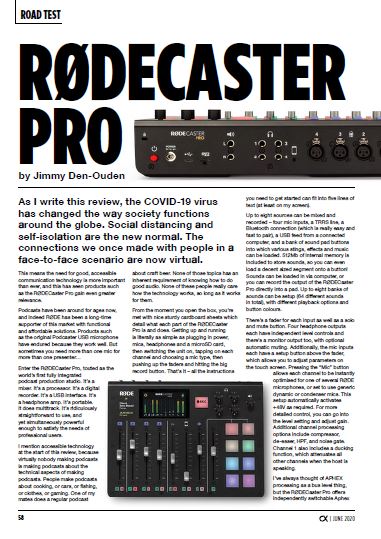
Entertainment technology news and issues for Australia and New Zealand
– in print and free online www.cxnetwork.com.au
© VCS Creative Publishing
Subscribe
Published monthly since 1991, our famous AV industry magazine is free for download or pay for print. Subscribers also receive CX News, our free weekly email with the latest industry news and jobs.

